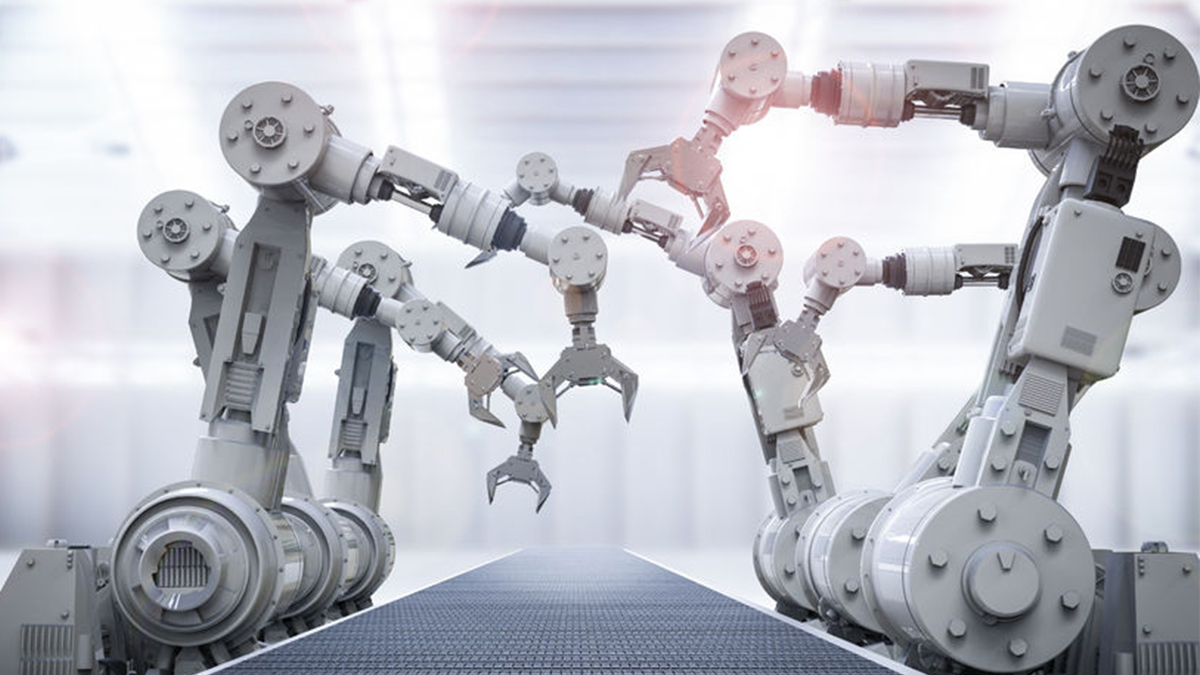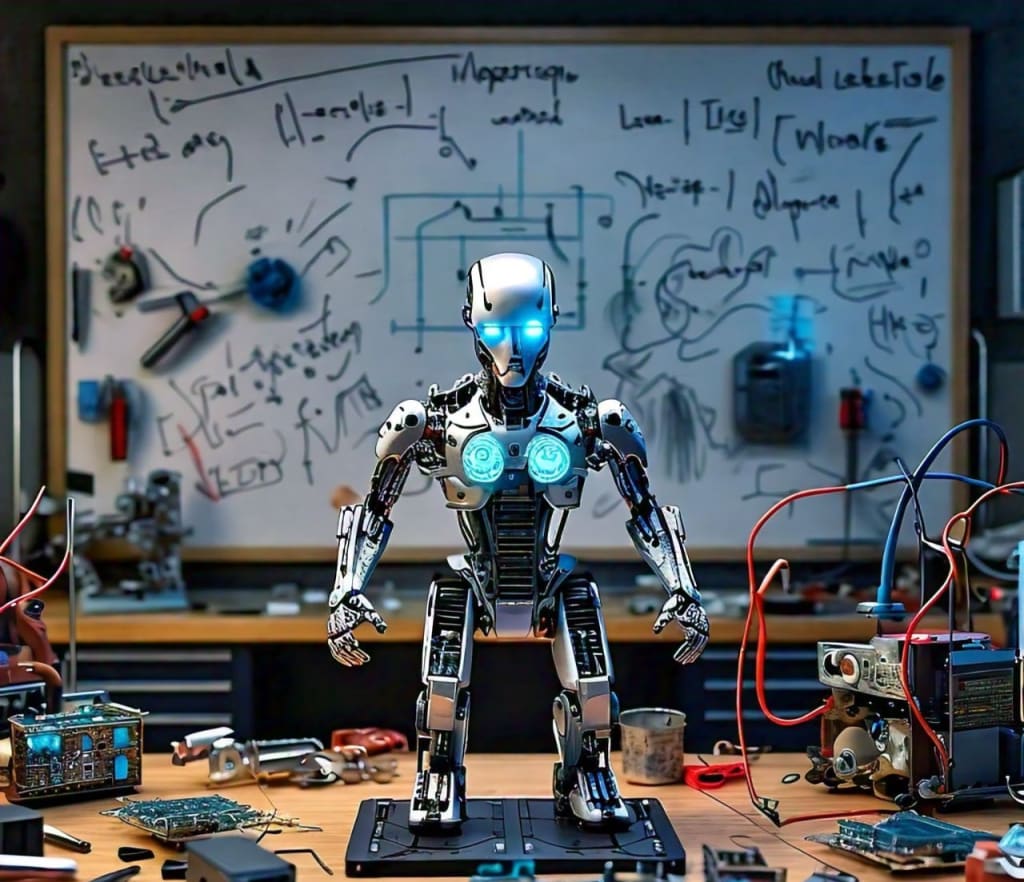The Future of Robotics: How Science Is Shaping Machines
 Robotics, once a domain of science fiction, has evolved into a critical field that is transforming industries, economies, and everyday life. The relentless pace of innovation in robotics is not merely about creating machines that perform tasks but about developing intelligent systems capable of interacting with the world in unprecedented ways.
Robotics, once a domain of science fiction, has evolved into a critical field that is transforming industries, economies, and everyday life. The relentless pace of innovation in robotics is not merely about creating machines that perform tasks but about developing intelligent systems capable of interacting with the world in unprecedented ways.
As we stand on the cusp of a new era, understanding how science is shaping the future of robotics is essential for grasping the full potential of this transformative technology.
The Intersection of Robotics and Artificial Intelligence
 The integration of artificial intelligence (AI) into robotics is revolutionizing the capabilities of machines. Unlike traditional robots, which rely on pre-programmed instructions, AI-powered robots learn from their environments, adapt to new situations, and make decisions autonomously.
The integration of artificial intelligence (AI) into robotics is revolutionizing the capabilities of machines. Unlike traditional robots, which rely on pre-programmed instructions, AI-powered robots learn from their environments, adapt to new situations, and make decisions autonomously.
This intersection of robotics and AI is driving the creation of more sophisticated and versatile machines.
Key Developments:
- Machine Learning: AI enables robots to learn from data, improving their performance over time. This is particularly evident in tasks such as image recognition, natural language processing, and predictive maintenance.
- Autonomous Systems: Robotics and AI are converging to produce autonomous systems capable of navigating complex environments. Examples include self-driving cars, drones, and robotic surgical assistants.
- Human-Robot Interaction: Advances in AI are enhancing human-robot interaction, making robots more intuitive and easier to work with. This is crucial in sectors like healthcare, where robots assist in patient care and rehabilitation.
These advancements are not only making robots more efficient but are also expanding their applications across various industries.
Robotics in Healthcare: Revolutionizing Patient Care
The healthcare sector is witnessing some of the most groundbreaking applications of robotics.
From surgical robots to rehabilitation devices, robotics is playing a pivotal role in improving patient outcomes and enhancing the efficiency of healthcare delivery.
Surgical Precision and Minimally Invasive Procedures
- Robotic Surgery: Surgical robots, such as the da Vinci Surgical System, are enabling surgeons to perform complex procedures with greater precision and control. These systems reduce the risk of human error and improve recovery times for patients.
- Minimally Invasive Techniques: Robotics is facilitating minimally invasive surgeries, which involve smaller incisions, less pain, and quicker recovery times. These techniques are particularly beneficial in delicate procedures like neurosurgery and cardiac surgery.
Patient Rehabilitation and Assistance
- Exoskeletons: Wearable robotic exoskeletons are helping patients with mobility impairments regain movement. These devices assist in rehabilitation by providing support and feedback, enabling patients to relearn motor skills.
- Robotic Companions: Socially assistive robots are being used to provide companionship and support to elderly patients and individuals with disabilities. These robots help reduce loneliness and provide mental stimulation.
The impact of robotics on healthcare is profound, offering new ways to enhance patient care and address challenges in the medical field.
Robotics in Industry: Enhancing Productivity and Safety
Industrial robotics has long been a staple in manufacturing, but recent advances are pushing the boundaries of what these machines can do. Modern robots are not only faster and more precise but are also capable of performing tasks that were once thought impossible.
Automation and Efficiency
- Robotic Process Automation (RPA): RPA is streamlining repetitive tasks across various industries, from manufacturing to finance. By automating mundane processes, companies can increase efficiency and reduce operational costs.
- Collaborative Robots (Cobots): Unlike traditional industrial robots, cobots are designed to work alongside humans. They enhance productivity by taking on tasks that are too dangerous or monotonous for human workers, while still allowing for human oversight.
Safety and Hazardous Environments
- Robots in Hazardous Conditions: Robotics is enabling work in environments that are too dangerous for humans. Robots are being used in tasks such as mining, deep-sea exploration, and disaster response, where human presence would be risky.
- Workplace Safety: The use of robots in industrial settings is improving workplace safety by taking on dangerous tasks. This reduces the risk of accidents and injuries, creating a safer work environment.
The continued development of industrial robotics is crucial for maintaining competitiveness in the global market, as it enhances both productivity and safety.
Ethical Considerations and the Future of Robotics
As robotics continues to advance, it raises important ethical questions about the role of machines in society. The future of robotics will not only be shaped by technological innovations but also by how we address these ethical challenges.
Job Displacement and Economic Impact
- Automation and Employment: While robotics enhances efficiency, it also poses the risk of job displacement. As machines take over tasks traditionally performed by humans, there is a growing concern about the impact on employment and the need for reskilling the workforce.
- Economic Inequality: The widespread adoption of robotics could exacerbate economic inequality, particularly if the benefits of automation are not distributed equitably. Ensuring that the gains from robotics are shared across society is a critical challenge.
Privacy and Security
- Data Privacy: As robots become more integrated into our daily lives, they will collect vast amounts of data. Ensuring the privacy and security of this data is essential to prevent misuse and protect individual rights.
- Autonomous Decision-Making: The autonomy of AI-powered robots raises questions about accountability and control. Who is responsible when an autonomous system makes a mistake? Developing frameworks for accountability is crucial as robots gain more decision-making capabilities.
Human-Robot Relationships
- Dependence on Robots: As robots become more prevalent, there is a risk of humans becoming overly dependent on them. Balancing the benefits of robotics with the need to maintain human agency and decision-making is essential.
- Ethical Programming: Ensuring that robots are programmed with ethical guidelines is important to prevent harm and ensure that machines act in ways that align with human values.
The future of robotics will be shaped by how we navigate these ethical considerations, ensuring that the technology benefits society as a whole.
References
- Artificial Intelligence in Robotics
- Advancements in Surgical Robotics
- The Role of Exoskeletons in Rehabilitation
- Collaborative Robots in Industry
- Robotics and Workplace Safety
- Ethical Considerations in Robotics
- Robotics in Hazardous Environments
- Impact of Automation on Employment
- Data Privacy and Robotics
- Human-Robot Interaction Ethics








































































